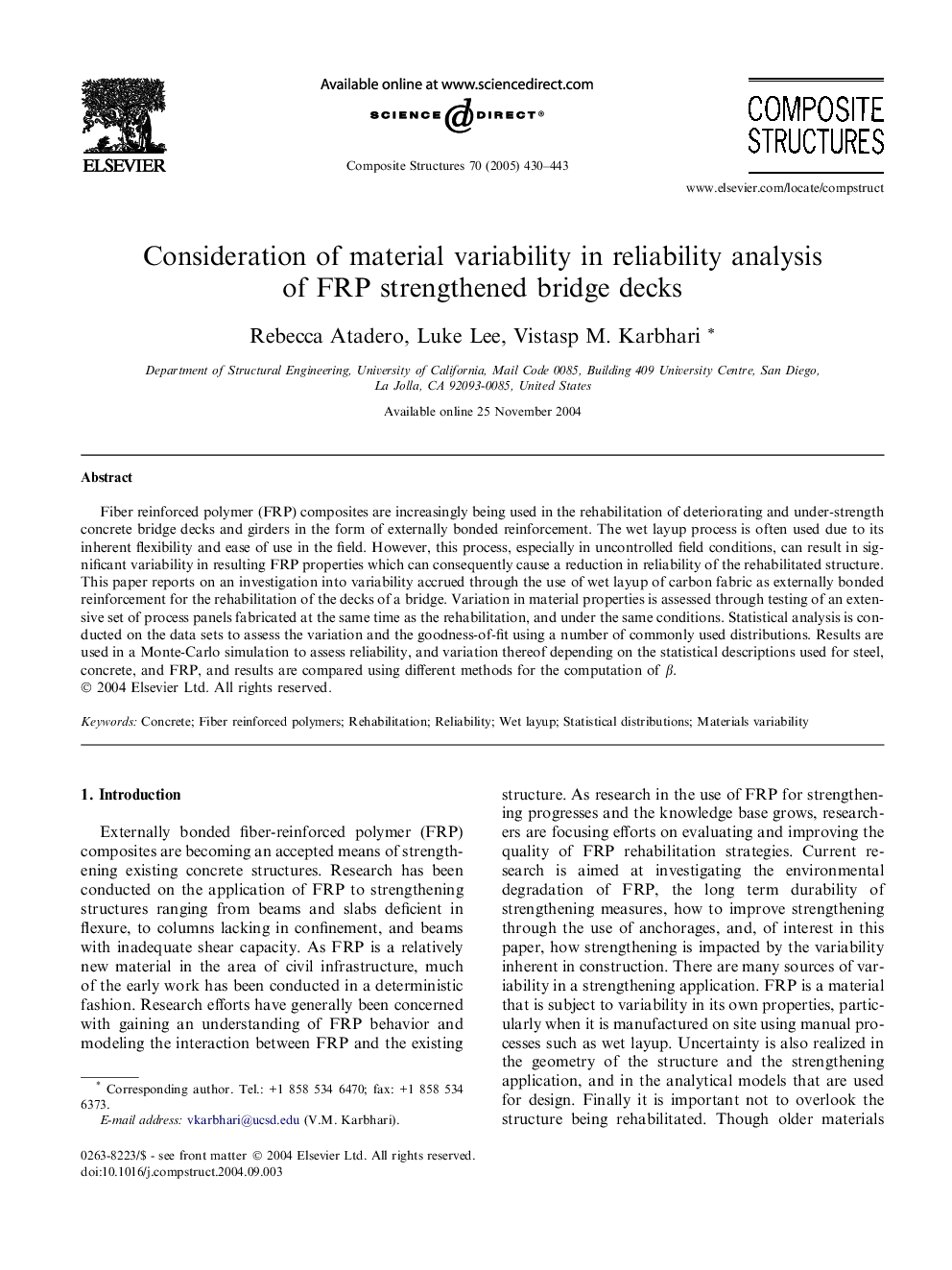| Article ID | Journal | Published Year | Pages | File Type |
|---|---|---|---|---|
| 9637796 | Composite Structures | 2005 | 14 Pages |
Abstract
Fiber reinforced polymer (FRP) composites are increasingly being used in the rehabilitation of deteriorating and under-strength concrete bridge decks and girders in the form of externally bonded reinforcement. The wet layup process is often used due to its inherent flexibility and ease of use in the field. However, this process, especially in uncontrolled field conditions, can result in significant variability in resulting FRP properties which can consequently cause a reduction in reliability of the rehabilitated structure. This paper reports on an investigation into variability accrued through the use of wet layup of carbon fabric as externally bonded reinforcement for the rehabilitation of the decks of a bridge. Variation in material properties is assessed through testing of an extensive set of process panels fabricated at the same time as the rehabilitation, and under the same conditions. Statistical analysis is conducted on the data sets to assess the variation and the goodness-of-fit using a number of commonly used distributions. Results are used in a Monte-Carlo simulation to assess reliability, and variation thereof depending on the statistical descriptions used for steel, concrete, and FRP, and results are compared using different methods for the computation of β.
Related Topics
Physical Sciences and Engineering
Engineering
Civil and Structural Engineering
Authors
Rebecca Atadero, Luke Lee, Vistasp M. Karbhari,
